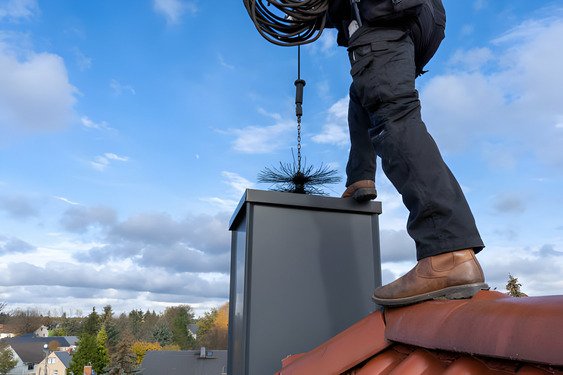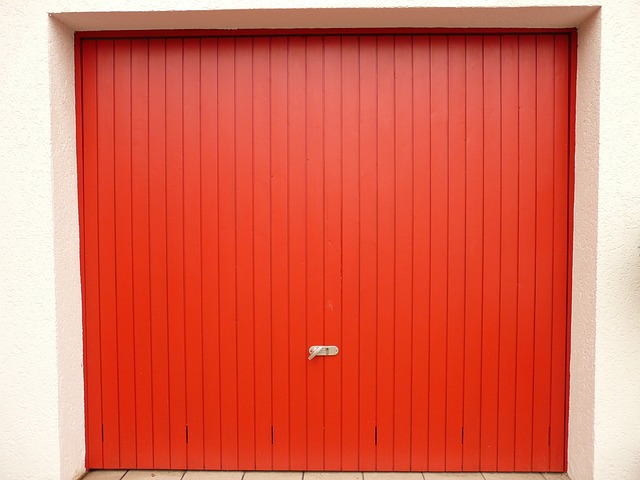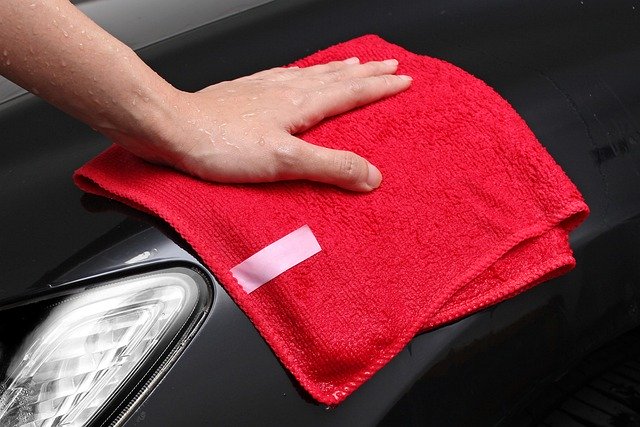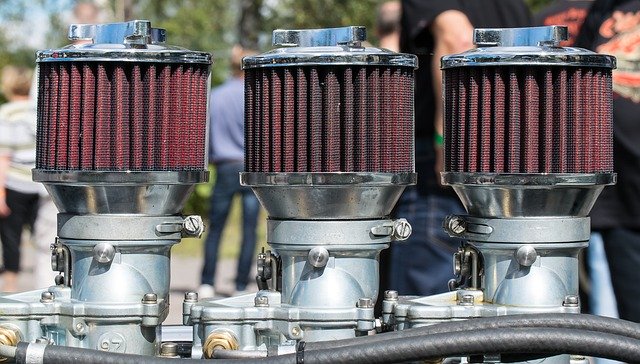As winter retreats and the warm embrace of spring arrives, many homeowners shift their focus from keeping warm by the fireplace to embracing the rejuvenating spirit of the season. Spring cleaning becomes a ritual to refresh and renew our homes, clearing away the dust and debris of winter. While many areas of the home get a thorough scrubbing, there’s one often-overlooked but vital component that deserves special attention – the chimney.
The chimney, though frequently concealed from our daily view, plays a crucial role in our homes. It channels the byproducts of combustion from fireplaces, stoves, and heating systems out of our living spaces. However, over time, chimneys can accumulate a variety of residues, deposits, and even potential blockages. Neglecting to clean your chimney can have far-reaching consequences for the safety, efficiency, and functionality of your heating system. In this comprehensive guide, we’ll explore the ten compelling reasons why cleaning your home’s chimney in the spring is so important.
Here is our related post on 4 Importance of Cleaning Your Home’s Chimney in the Spring
1. Safety First
The primary and most critical reason to clean your chimney in the spring is safety. Over time, soot and creosote, a highly flammable residue, can accumulate on the inner walls of your chimney. If left unattended, this buildup can ignite and lead to a chimney fire. These fires can be devastating, causing extensive damage to your home and posing a significant risk to your family’s safety.
2. Reduced Risk of Carbon Monoxide Poisoning
A dirty or blocked chimney can hinder the proper venting of gases, including carbon monoxide, out of your home. Carbon monoxide is a colorless, odorless gas that is lethal in high concentrations. Regular chimney cleaning and maintenance help ensure that dangerous gases are vented safely, reducing the risk of carbon monoxide poisoning.
3. Improved Efficiency
Soot and creosote deposits in the chimney can restrict the flow of exhaust gases, making it harder for your heating system to function efficiently. The more restricted the airflow, the less efficient your heating system becomes. This inefficiency not only drives up your energy bills but can also lead to incomplete combustion, producing even more creosote and further reducing efficiency.
4. Extended Appliance Lifespan
A cleaner chimney is not only essential for the longevity of your heating system but also for the appliances that use it. By reducing the workload on your heating system and appliances, you can extend their lifespan, saving you the expense and inconvenience of premature replacements.
5. Preventing Animal Intrusion
During the spring and summer months, when the chimney is not in use, birds, squirrels, and other critters often view it as an inviting nesting spot. Their nests can obstruct the chimney, leading to airflow issues, blockages, and even the possibility of fires. Spring cleaning your chimney helps ensure that it’s clear of any animal-related obstructions.
6. Maintaining Indoor Air Quality
A dirty chimney can negatively impact indoor air quality. If the chimney doesn’t draw correctly, it can result in backdrafts, pushing smoke and pollutants, including carbon monoxide, into your home. Regular chimney cleaning helps maintain a healthier indoor environment.
7. Minimizing Bad Odors
Over time, creosote deposits in your chimney can create unpleasant odors. These odors can become noticeable when the weather warms up and the chimney heats up. Spring cleaning helps eliminate these odors, providing a more pleasant and odor-free living space.
See also our post on 10 Importance of Cleaning Your Home’s Dryer Lint Trap
8. Avoiding Moisture Damage
Leaving your chimney unattended during the spring and summer months can lead to moisture infiltration. Rainwater can seep into the chimney, causing damage to the flue lining or other components. Chimney cleaning and inspection in the spring can help identify and address these issues before they worsen.
9. Preventing Blockages
Debris, such as leaves, branches, and even small animals, can block the chimney’s opening or accumulate in the flue. These blockages can obstruct the flow of gases and impair the chimney’s functionality. Spring cleaning ensures that your chimney is free of any such obstructions.
10. Ready for the Next Heating Season
Perhaps the most practical reason for cleaning your chimney in the spring is that it readies your heating system for the next heating season. Once your chimney is cleaned, inspected, and any necessary repairs are made, you can enjoy peace of mind, knowing that your heating system is prepared to provide warmth and comfort when winter returns.
DIY vs. Professional Chimney Cleaning
Now that we’ve established the importance of spring chimney cleaning, the next question is whether to tackle the task yourself or hire a professional chimney sweep. Here are some key considerations for each option:
Do-It-Yourself (DIY) Chimney Cleaning
Pros:
- Cost-effective: DIY chimney cleaning can save you money.
- Educational: Cleaning your chimney yourself can help you learn about your home’s heating system.
- Immediate action: You can clean your chimney as soon as you notice a problem or buildup.
Cons:
- Safety risks: Cleaning a chimney can be a dirty and potentially hazardous task. Climbing on the roof and working with soot and creosote can pose risks.
- Limited equipment: You may not have access to specialized chimney cleaning tools and equipment.
- Lack of expertise: Professionals have the experience and knowledge to spot potential issues you might miss.
Professional Chimney Cleaning
Pros:
- Expertise: Chimney sweeps are trained to identify and address chimney issues, from creosote buildup to structural problems.
- Safety: Professionals have the necessary safety equipment and experience to work on your chimney safely.
- Thoroughness: Chimney sweeps have the tools and equipment to perform a thorough cleaning and inspection.
Cons:
- Cost: Hiring a professional chimney sweep can be more expensive than DIY cleaning.
- Scheduling: You’ll need to schedule an appointment, and there may be a wait during the busy fall season.
In general, if you have a straightforward chimney with no significant issues or concerns, and you’re comfortable with the safety risks involved, DIY cleaning can be a cost-effective option. However, for complex chimneys, severe creosote buildup, or if you’re uncertain about safety procedures, it’s advisable to seek professional services.
See also our post on The Importance of Cleaning Your Home’s Dryer Lint Trap
DIY Chimney Cleaning Steps
If you decide to clean your chimney yourself, follow these steps to ensure a thorough and safe cleaning process:
Step 1: Gather your tools and equipment
- Chimney brush and rods (make sure they’re the right size for your flue)
- Drop cloth or tarp to protect the area
- Flashlight
- Dust mask
- Safety goggles
- Fireplace or stove gloves
- Plastic bags for soot and debris
- Shop vacuum or a heavy-duty vacuum cleaner with a hose attachment
- Long-handled brush and dustpan
- Ladder (if needed)
Step 2: Prepare the area
- Cover the area around the fireplace or stove with a drop cloth or tarp to catch any debris.
- Close the damper to prevent debris from falling into the room.
- Wear safety goggles, a dust mask, and gloves to protect yourself from soot and debris.
Step 3: Access the chimney
- If your fireplace has glass doors, remove them.
- Use the flashlight to inspect the chimney’s condition and locate any blockages or buildup.
Step 4: Clean the chimney
- Attach the chimney brush to the rods and insert it into the chimney.
- Use an up-and-down motion to scrub the interior of the chimney. Be thorough but gentle to avoid damaging the flue lining.
- Work your way from the top of the chimney down to the fireplace or stove.
- Use the vacuum cleaner to remove the loosened soot and debris.
Step 5: Check for blockages
- After cleaning, use the flashlight to inspect the flue for any remaining blockages or obstructions.
- Ensure that the damper is operating correctly.
Step 6: Dispose of debris
- Seal the collected soot and debris in plastic bags for disposal.
Step 7: Clean the area
- Use the vacuum cleaner to clean the area around the fireplace or stove.
- Use a long-handled brush and dustpan to collect any remaining debris on the drop cloth or tarp.
Step 8: Reassemble and test
- Reassemble any components you removed, such as glass doors.
- Open the damper and test the fireplace or stove to ensure proper operation.
Here is our post on A Comprehensive Guide to Cleaning and Maintaining Your Exterior (Siding, Gutters, Windows)
Conclusion
Spring chimney cleaning may not be the most glamorous or exciting task, but it is undeniably crucial for your home’s safety, efficiency, and functionality. Ignoring the importance of cleaning your home’s chimney can lead to dire consequences, from chimney fires to poor indoor air quality and increased energy bills.
Whether you choose to undertake chimney cleaning yourself or hire a professional chimney sweep, the key is to take action. By scheduling spring chimney cleaning, you not only ensure the safety and health of your family but also maintain the longevity of your heating system and appliances.
As you embrace the beauty of spring, don’t forget the hidden hero of your home – the chimney. Keep it clean and clear, and you’ll enjoy a season of warmth and comfort with peace of mind.














